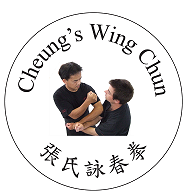www.cheungswingchun.co.uk 張氏詠春
Translated this means ‘little ideas’ and is the first Wing Chun Form; the bed rock to all Wing Chun hand technique.
It introduces correct hand placement, the theory ofthe centre line and strengthens the mind and body in preparations for the other forms. It consists of around 108 hand techniques depending on which lineage you follow.
Further differences may arise due to lineages, but are considered minor such as where one lineage may place more emphasis to a particular section another might not or may subtly change the order of things. The commonality remains, however, that the form is usually taught in three distinct parts so as not to confuse the student.
This Wing Chun Form is performed stationary and unfortunately from the view point of the general public may find this visually boring – like either watching a painter waving his or her arms madly about in thin air (an indication the Form is rushed) or is like watching paint dry where the painter’s intense concentration is etched across his or her face (a sign that the practitioner may know the Form, but needs to relax).
To strip away this imagery (pun intended), the general public and for beginners, needs to know the following:

- The Form is stationary as the practitioner is holding the Yee Gee Kim Yeung Ma (二字箝羊馬) stance. This is the fundamental basic training stance of Wing Chun which in itself requires a series of prescribe moves for the practitioner to find their own weight distribution, balance and centre of gravity correctly adjusted.
- There are repetition of movements, not just for your left and right hand but that some of the hand techniques are repeated three times. This is traditional with perhaps some obscure reason in the past but nowadays it is generally accepted – does it once to learn it, do it twice to understand it, do it the third time to try and perfect it.
- All of this requires concentration, with each hand movement needing to be precise, controlled and exact. With concentration comes tension in body and in mind which the practitioner needs to overcome. When that is achieved the mind is not idle, as each movement will require constant ‘forward thought’, one of the major principles of Wing Chun.
- There should be some symmetry lines in the Form as shown in the book (i.e. body centre lines) – basically, this is achieved largely by keeping the head still.
- The ending of the Form should not be sloppy. It too consists of a series of movements to ensure the legs are eased into their natural standing position.
For now, common mistakes associated with the Form comes from over emphasis of the centre line assuming everybody’ body shapes are identical – one size fits all. This leads to adverse rotation and distortion, in particular in the stance. This should be prevented by reminding the practitioner that although aligning towards to the centre line is the desire goal, this can only be achievable when the body has developed accordingly, namely the shoulder ligaments have relaxed and lengthen sufficiently.
Other common mistakes is allowing the resting hand to drop or be actually resting on the body or that the elbow begins to sway throughout the Siu Lim Tao sequence (小念頭) forming the unsightly (but classic) ‘chicken wing’, ‘aeroplane’- i.e. both elbows MUST not sticks out and they need to keep it relatively close to the body.

too low, knees too close, can hurts the knees.

elbows too spread out, can upset hand techniques.

too upright, no grip and not in stance: cannot experience internal strength.
